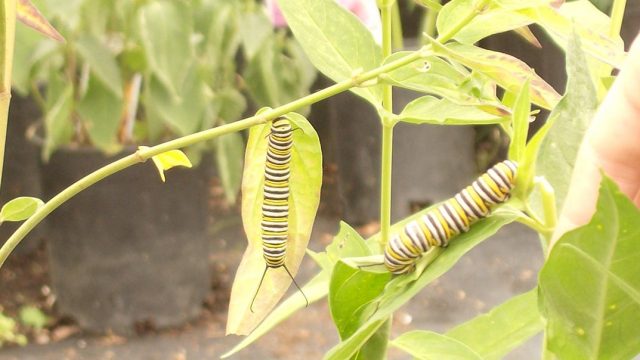This year’s early spring brought monarchs back to our greenhouse earlier than ever, and we’ve never had so many caterpillars in the greenhouse in April. The early warm weather brought the migrating monarchs returning to their homes in Canada early enough to roost and reproduce in the greenhouse in record numbers. The new butterflies that emerge at VVN will continue the spring flight northward. It’s always intriguing to consider that a delicate butterfly has come such a long distance, and it’s also cool that they work in relay teams to keep their species thriving. Here’s more info on how the migration works, and the plants you can get at VVN to help them get where they’re going!
The migration
According to The Butterfly Website
In a monarch butterfly’s life cycle, it goes through a complete metamorphosis involving four stages: egg, larva (or caterpillar), pupa, and adult. In addition, each individual monarch contributes to a larger population life cycle, involving many generations. The fall migrants are usually 3 or more generations removed from the monarchs that overwintered in Mexico during the previous winter. In other words, each fall the last generation of monarchs must navigate to a location, perhaps 2000 miles away, which they’ve never visited.
The majority of monarchs who make the fall journey are in reproductive dormancy. The goal of this initial population is to survive the trip to the overwintering sites in Mexico. After their season in the migratory site, the female monarch reproductive organs become fully developed and mating takes place.
As they migrate north in the spring, they lay eggs on milkweed along the way. These larvae appear in the southern return path in March and early April. This generation will also migrate North following their parents. The reproductive cycle continues and by August to early September, three to four generations will have evolved. So losses which have occurred througout the migration cycle will be replenished by this population buildup.
It would be nearly impossible for an individual monarch butterfly to complete this entire migratory cycle. Because of this, their rapid system of reproduction is of great importance to the survival of the species and the completion of the migratory cycle from year to year.
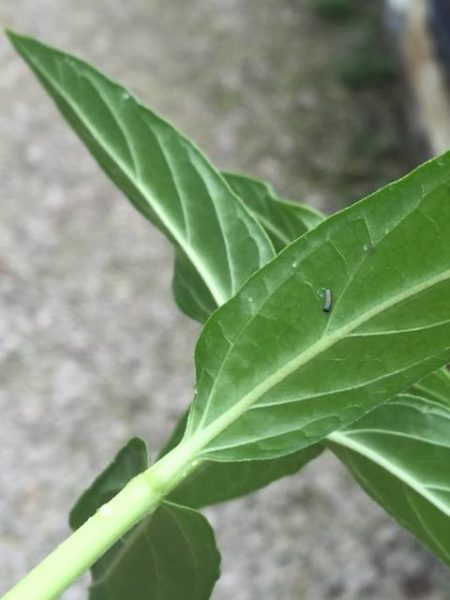
The monarchs arrived this spring in Vinland on April 9, and all of our Asclepias plant starts have been covered with the caterpillers that began hatching around April 14 ever since! We grew five species of perennial Asclepias this year, along with a tropical. They’ve all provided food for a dizzying number of caterpillers–we’re glad we were ready for them!
tropical milkweed (Asclepias
curassivica)
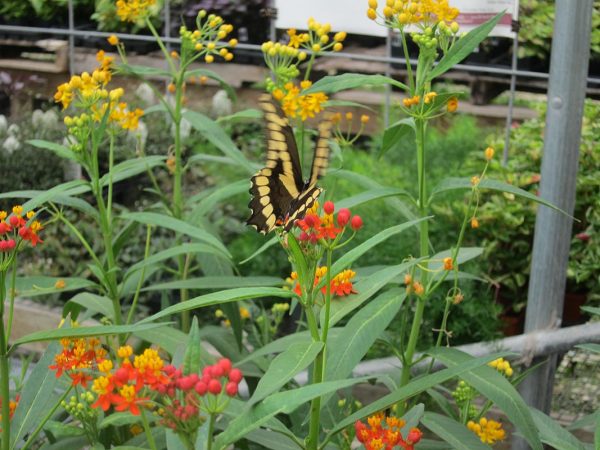
An excellent butterfly garden plant, tropical milkweed (Asclepias curassivica) provides food for monarch and queen caterpillars and butterflies, and is also appreciated by hummingbirds. Flowers make great cuts for floral arrangements. Asclepias are also favored by wild and domestic bees, and attract and support many species of beneficial predatory insects. A great choice for planting in the landscape and vegetable garden.
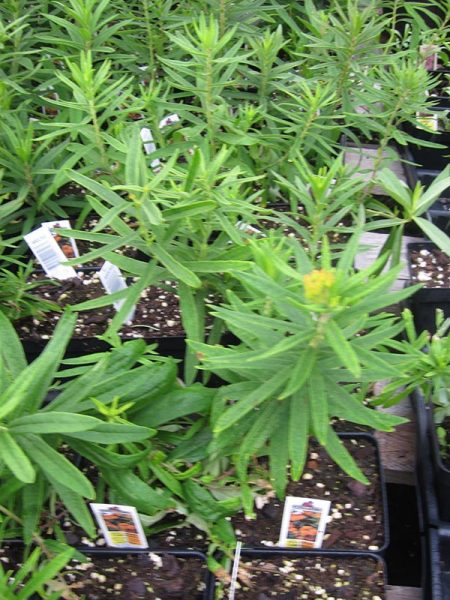
butterfly milkweed (Asclepias tuberosa)
With showy orange flower heads in early summer, these compact milkweed plants bloom for an extended period on 24-30″ plants. Monarch caterpillers devour leaves, stems and all in spring and rely on the flower nectar in fall. These super tough native prairie plants tolerate heat and drought in horrible clay soil. They’re fantastic planted with native grasses, Rudbeckias and other native flowers.
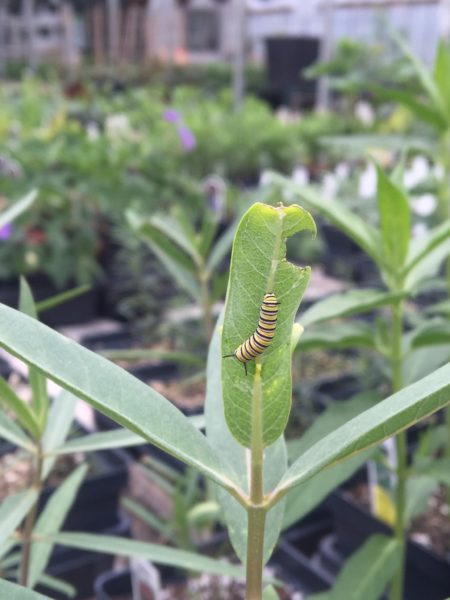
swamp milkweed (Asclepias incarnata)
Swamp milkweed sports lightly fragrant flower clusters from early summer through fall on 3-5′ tall plants. Choose the pure native pink or white flowering selection called ‘Ice Ballet’. As the name suggests, this species is tolerant of poorly drained sites. The foliage is a favorite on caterpillars!
showy milkweed (Asclepias speciosa)
Showy milkweed produces dusty pink flower clusters in mid-summer atop large, glossy leaves that resemble a rubber tree plant. Flowers are followed by large, decorative seed pods. Showy milkweed provides a favorite food source for monarch caterpillars. They grow up fast in the Vinland Valley Nursery greenhouse.
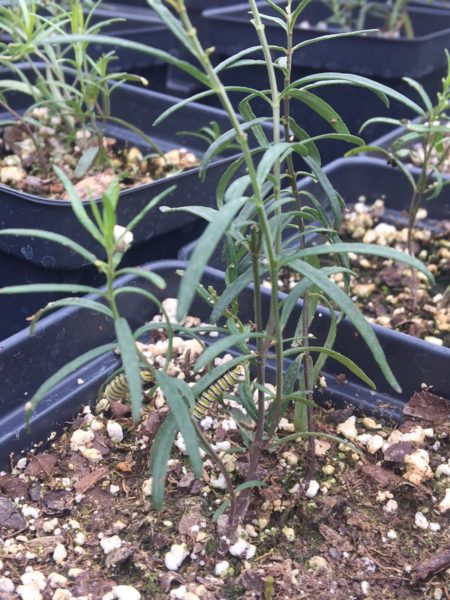
whorled milkweed (Asclepias verticillata)
According to the website Monarch Butterfly Garden, you shouldn’t rely on it as your main milkweed source for caterpillars, or you may run out of milkweed by mid-season. Whorled milkweed blooms later than other milkweeds with white flowers July thru September.
tall green milkweed (Asclepias hirtella)
Plants grow up to 4′ and produce white-green flowers. This species prefers medium-wet to dry soil and grows best in full sun to partial shade. Blooms mid-summer and is attractive to butterflies and bees, including honeybees, bumblebees, and leaf-cutting bees.
